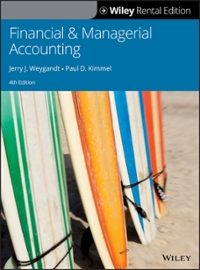Question
For the income year 2008-2009 Johnson Pty Ltd, an Australian resident private company for tax purposes, makes a profit for financial accounting purposes of $3,000,000
For the income year 2008-2009 Johnson Pty Ltd, an Australian resident private company for tax purposes, makes a profit for financial accounting purposes of $3,000,000 (after payment of foreign tax) made up as follows:
a profit of $ 950,000 on the sale of a pre-CGT asset
a trading profit of $1,000,000 from its business of manufacturing and selling bean counters
a dividend of $ 50,000 received from Maxi Ltd (an Australian resident public company for tax purposes) franked to 50%.
a profit of $1,000,000 from the operations of Johnson Pty Ltd's branch in New Zealand which is non assessable non exempt income to Alpha Pty Ltd under ITAA 1936 s23AH.Johnson Pty Ltd paid $300,000 New Zealand Company tax on the income of $1,300,000 from which the dividend was paid.The New Zealand branch of Johnson Pty Ltdalso conducts a business of manufacturing and selling bean counters but its operations are confined to New Zealand.The New Zealand branch of Johnson Pty Ltd was established on 10 July 2008,
Johnson Pty Ltd incurred a tax loss of $200,000 in the 2006-2007 income year.
Johnson Pty Ltd's trading account for the year ending 30 June 2009 was as follows:
Opening stock (at cost)$5,000,000 ($2 per bean counter)
Purchases$6,000,000 ($2 per bean counter)
Sales $11,000,000
Other deductible expenses$100,000
Johnson Pty Ltd sells bean counters at cost plus 10%.Of the sales $1,000,000 represents invoices issued in the month of June 2009 for which payment had not been received as at 30th June 2009.In June 2009, due to the global financial crisis, the price of bean counters falls to $1 per bean counter which would be the unit price at which Johnson Pty Ltd could replace its stock of bean counters.
On 1 May 2009 the directors of Johnson Pty Ltd hear a rumour that, in an effort to become more globally competitive the Australian company tax rate will fall to 25% as from 1 July 2009.Advise Johnson Pty Ltd as to what adjustments it can make to the valuation of its trading stock as at 30 June 2009 so that less of its income is recognised for tax purposes in the year ending 30 June 2009.
In the year ending 30 June 2009 Johnson Pty Ltd also made a provision of $30,000 for accrued long service leave for its employees.In fact, none of its employees were entitled to take long service leave in the year ending 30 June 2009.
After making the adjustments you suggest to the valuation of its trading stock for the year ending 30 June 2009, calculate Johnson Pty Ltd's income tax liability in respect of the income that it derived in the 2008-2009 year of income. Assume that Johnson Pty Ltd had no deductions other than expenses which have been taken into account in determining its trading profit and the loss carried forward. In your answer discuss whether or not the loss carry forward will be deductible to Johnson Pty Ltd in the year ending 30 June 2009.
In relation to the year ending 30 June 2009 Johnson Pty Ltd paid a total of $60,000 in instalments of tax.
On 1/7/2008 the balance in Johnson Pty Ltd's franking account was zero.Construct Johnson Pty Ltd's franking account for the year ending 30 June 2009.
On 1 July 2009 Johnson Pty Ltd declares a dividend of $1.2 million.Calculate the maximum franking credit that Johnson Pty Ltd can attach to this dividend.Comment on the consequences for Johnson Pty Ltd if it attaches the maximum franking credit to this dividend.Having regard to these consequences advise Johnson Pty Ltd of the amount to which it should frank the dividend.
During the year ending 30 June 2007 Johnson Pty Ltd's shareholders were Jack, a resident natural person whose marginal tax rate is 30%, and Etta, a non-resident natural person. Both Jack and Etta had a 50% shareholding in Johnson Pty Ltd at that time.On 1 July 2008 Jess an Australian resident natural person whose marginal tax rate is 45% purchased 60% of Jack's shares and 60% of Etta's shares in Johnson Pty Ltd. Assuming that the dividend from Johnson Pty Ltd is franked to the extent that you recommend, advise Jack, Etta and Jess of the tax effects of the payment of the dividend from Johnson Pty Ltd to them.
Discuss whether or not the Australian dividend imputation system contains biases against non resident shareholders and biases against investment offshore by Australian companies.
Your answer should show all relevant calculations and should make reference to relevant legislative provisions and principles of taxation law.Ignore GST in your answer.
Step by Step Solution
There are 3 Steps involved in it
Step: 1

Get Instant Access to Expert-Tailored Solutions
See step-by-step solutions with expert insights and AI powered tools for academic success
Step: 2

Step: 3

Ace Your Homework with AI
Get the answers you need in no time with our AI-driven, step-by-step assistance
Get Started


